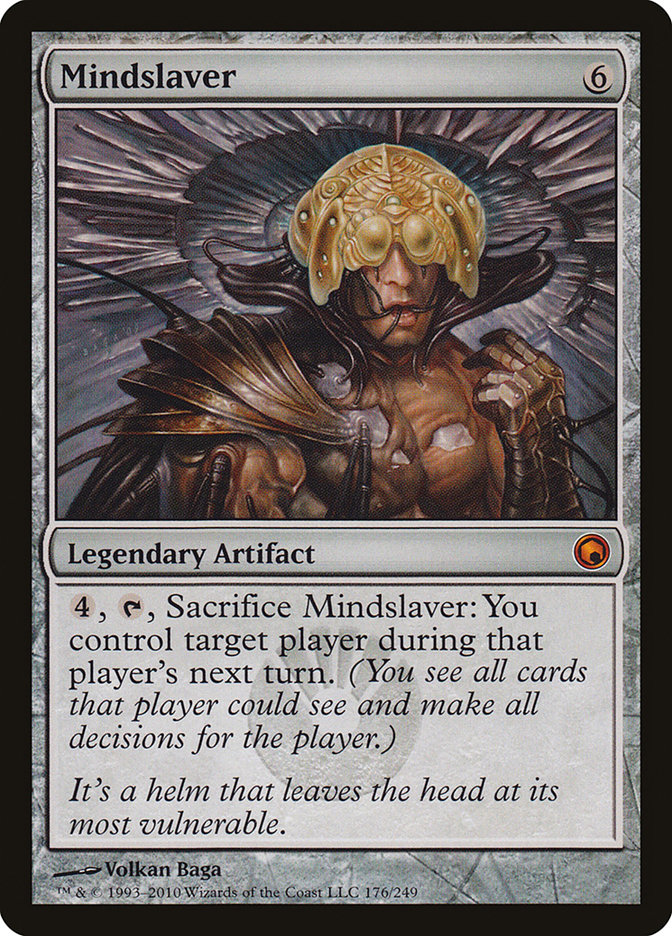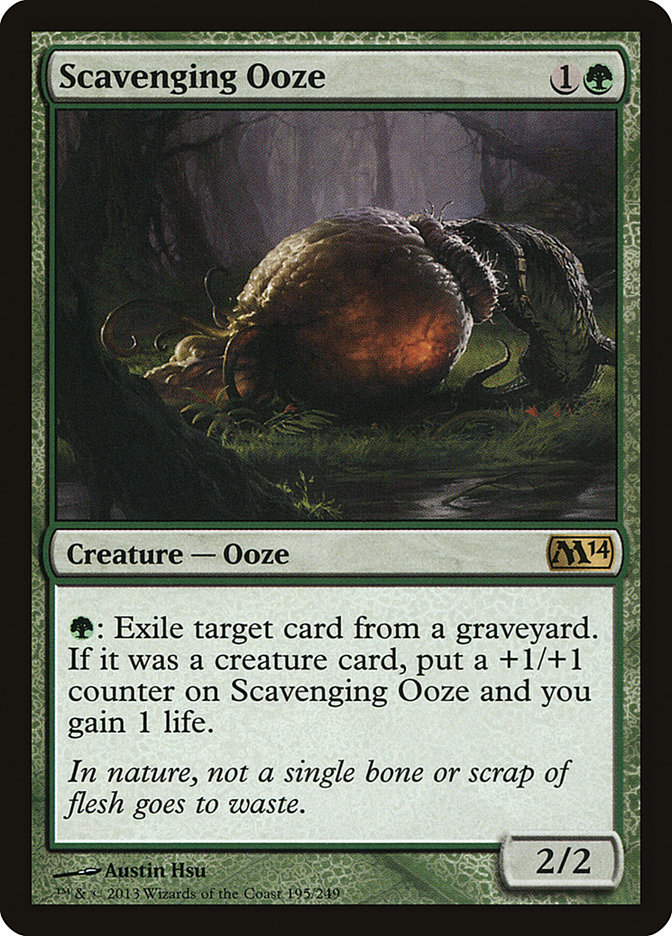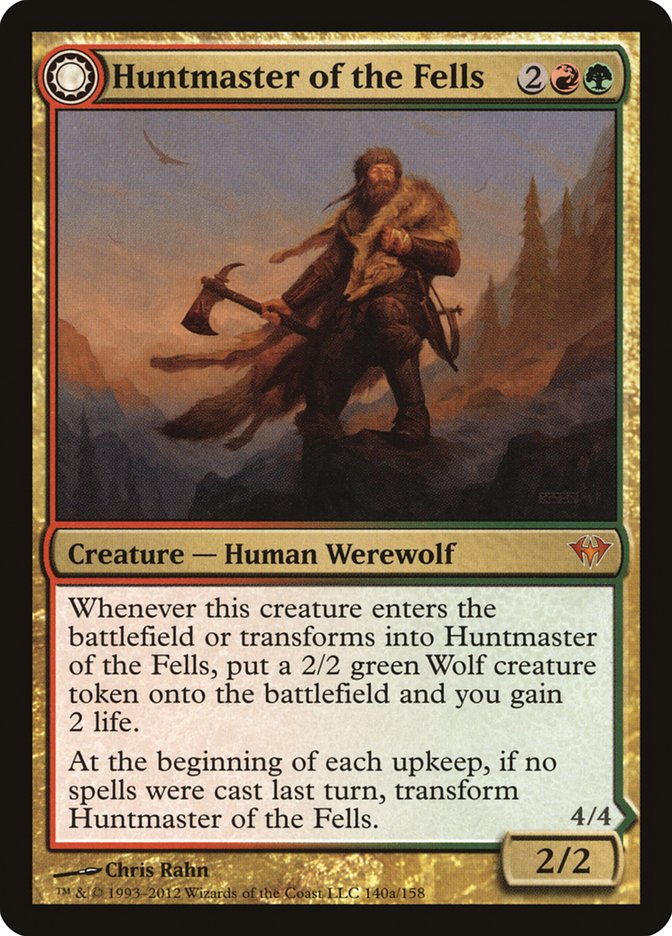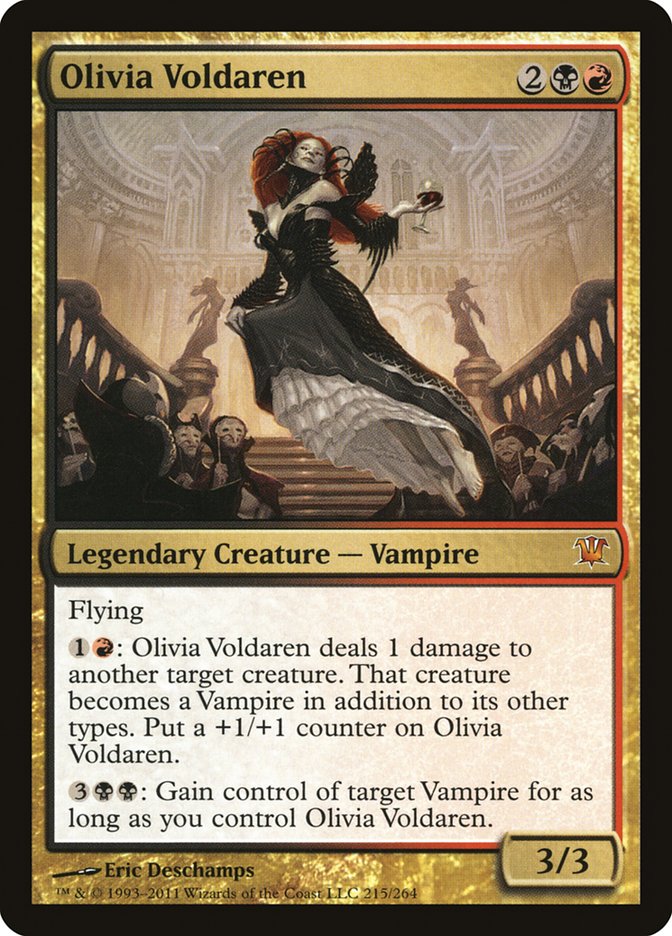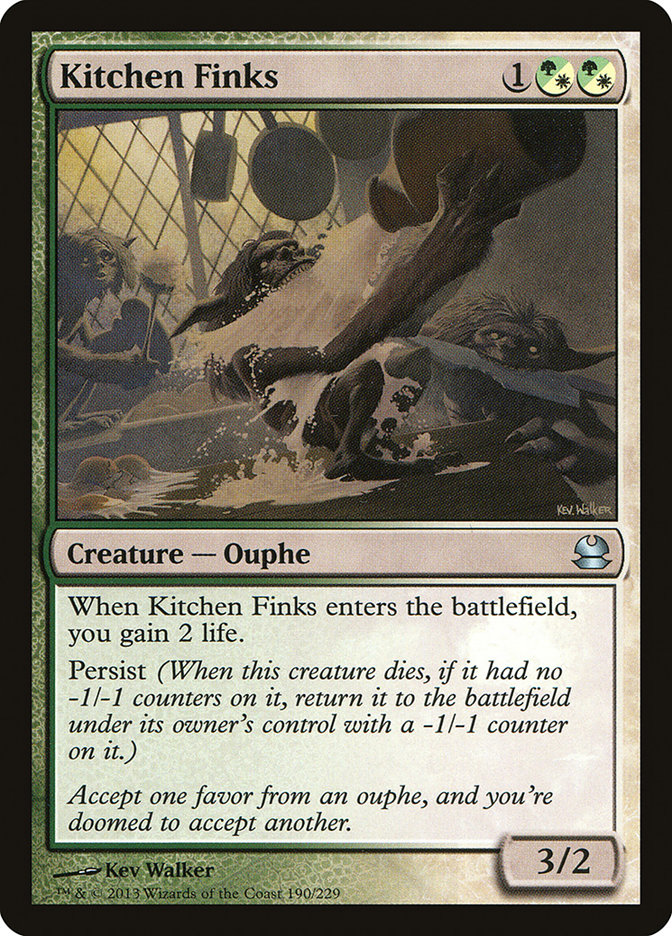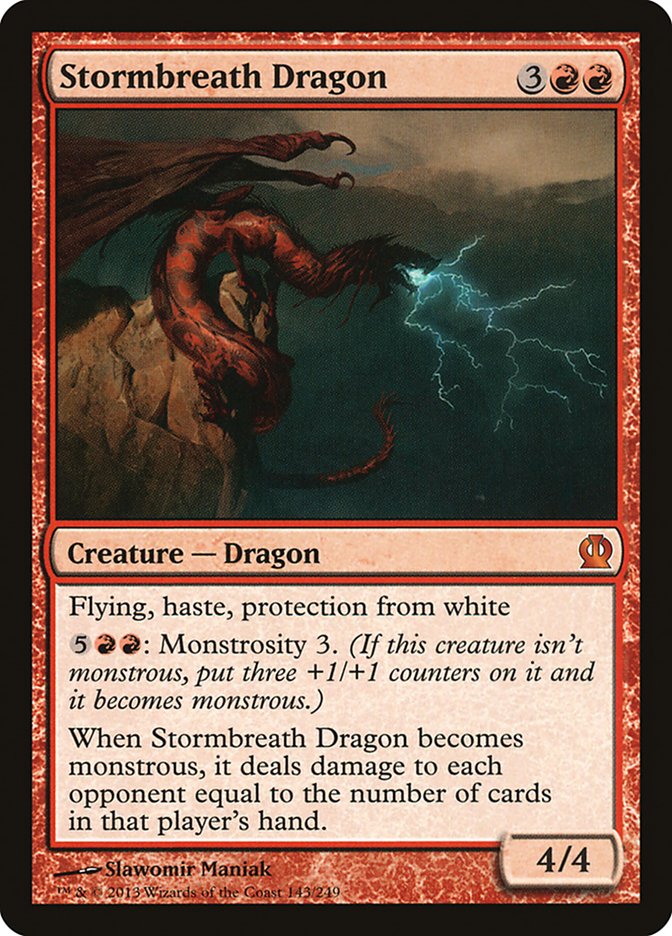We knew it was coming.
I mean, the set was called Eldritch Moon, so it was likely that the big baddie was going to be the missing Eldritch-inspired Eldrazi titan, Emrakul.
I think that this Cardboard Crack comic basically says it all.
Don’t get me wrong, though. The new Emrakul, the Promised End is out-of-this-world powerful. I really hope that she ends up being a big player in the new Standard format, but that is really going to rely on how easy it is to reduce her cost. Getting her down to eight mana with an instant, sorcery, creature, land, and one of artifact, planeswalker, or enchantment is going to be the big kicker. At that cost, we can cast her off a Shrine of the Forsaken Gods and six other land.
If you’ve ever played with the card Mindslaver, then you know just how powerful this effect is. If you haven’t played with the card Mindslaver, may Emrakul help you’mrakul.
But First…
Standard for the last month or so has been an arms race between the midrange decks, and a Mindslaver effect like this is just what is needed to push the envelope in that battle. The other question that begs to be asked is if Emrakul, the Promised End is better than Ulamog, the Ceaseless Hunger. In the decks that aren’t dedicated to ramp, I would have to say likely yes, but in the dedicated ramp decks? Once we have more cards, I’m definitely going to find out.
In the meantime, though, my focus is shifting to something a little less maddening, or moreso, depending on how much you like Modern.
Last weekend at #SCGORL we got to see Jund take the Classic crown in the hands of Hirotsugu Funatsu.
Creatures (13)
Planeswalkers (4)
Lands (22)
Spells (21)

It may be my midnight conversations with Andrew Boswell during coverage trips that have me looking toward Jund in Modern. It may also be how amazed I am by Bard “Jund Guy” Narson and his skills in the format, but I’ll likely start with Jund for my Modern endeavors moving forward for a couple of reasons.
First, even when Jund is “bad,” it’s still never that bad. This is mainly because the G/B/x decks always have great sideboard options to them, and as long as you can pilot properly and build the right sideboard for the expected metagame, you can be successful with Jund. Besides, even if you are an underdog, sometimes Thoughtseize into Dark Confidant can just steal the game.
Second, with Modern being a constantly evolving format and me being still relatively new, since the only two decks that I ever sat down and attempted to master were Melira Pod and Amulet Bloom, starting and sticking with one of the stalwarts of the format is something that I can get behind.
I’ve dabbled in a few Modern decks here and there. G/R Tron, since big mana appeals to me. Affinity, because I’m old and still have original Darksteel Arcbound Ravagers. But I don’t want to spend my time learning and trying to master a new deck every time something in the metagame shifts. I want to already be the master and adjust my angle of attack with a familiar arsenal. I want to be able to give proper advice on how and what to sideboard and have answers for the reasons that I’m trying things out, rather than just clamoring that I’m playing the list Joe Lossett played, since he did so well at the Open.
Jund is that kind of deck. It is constant, the Phyrexians of the Modern world. It just keeps moving forward, progressing at every event, learning, adapting, and coming out on top like it did this weekend.
Before I finally jump into putting the deck together and playing, I want to gather as much information as I possibly can. Scouring decklists, I find that there are a lot of constants. Liliana of the Veil, Dark Confidant, Scavenging Ooze, Tarmogoyf, and the cast of disruption and removal seem to be pretty standard.
The biggest point of contention seems to be the four-drops; how many, if any, and which ones to use.
In his #SCGORL Modern Classic-winning list, we see Hirotsugu use two copies of Kalitas, Traitor of Ghet, which is a relatively new addition. We have seen Grixis decks adopt Kalitas, Traitor of Ghet already, but using him in the Jund shell is fairly new. I think it’s extremely potent.
Decks like Abzan Company don’t generally have many ways, if any, to handle Kalitas Game 1. He lets us steal some games against creature-based strategies and actually does a pretty good job when our life total isn’t an expendable resource. Fetches, shocks, Thoughtseize, and Dark Confidant can put our life total under a lot of stress, and having another form of lifegain outside of Scavenging Ooze is pretty good.
There are some other options though. Huntmaster of the Fells, Olivia Voldaren, and Pia and Kiran Nalaar are also potential candidates, but if we look closer at the fourth-place list and the tenth-place list, both of them had Kalitas, Traitor of Ghet.
In his fourth-place list, Edurado Torra even goes a bit further and cuts Dark Confidant completely for an entire set of Goblin Dark-Dwellers.
Creatures (12)
Planeswalkers (4)
Lands (22)
Spells (22)

This is interesting, as we have seen the Grixis decks employ the Oath of the Gatewatch five-drop as a way to gain value with its removal and Ancestral Vision, but here in Jund it can play a similar role. All of our discard and the removal spells like Abrupt Decay, Kolaghan’s Command, Terminate, Lightning Bolt, and Maelstrom Pulse can be recast, but Eduardo also has three copies of Boom // Bust.
Ever wish you could just Armageddon when you were already pretty far ahead and just put the game away?
Boom has nice synergy with fetchlands; target your own fetch and your opponent’s land, retain priority, and use your fetchland. Since Boom has two targets and one is still legal, the spell will resolve and destroy your opponent’s land.
The interaction with Goblin Dark-Dwellers is even better. When you target a split card with Goblin Dark-Dwellers, you can choose either half to play as long as one of the halves is a legal target for Dark-Dwellers. This is similar to cascade, where if you cascade into a Boom // Bust, it is a legal card to cascade into as long as your cascade card has converted mana cost three or more, yet you can choose the Bust half as the half to be played.
Hmm, 3RR for a 4/4 with menace that destroys all lands. That does seem pretty good!
Outside of this innovation, we see some pretty cookie-cutter builds. I kind of like the Boom // Bust route, since having some extra game against a deck like G/R Tron is something that Jund can use, and the possibility of just putting any game away with a 4/4 Armageddon is something I can get behind.
When we look at each player’s sideboard, we start to see some more common threads.
Kitchen Finks is pretty unanimous. It’s not very often that there is a card that can play roles against aggressive and controlling/attrition-style decks, and Kitchen Finks plays that role perfectly. Against Zoo and Burn, against Grixis and Jeskai Control, having access to a non-two-cost threat that requires multiple spells to handle is great.
All players except for Hirotsugu have some additional four-drops in their sideboard, whether Kalitas, Traitor of Ghet; Thrun, the Last Troll; Huntmaster of the Fells; and Pia and Kiran Nalaar. Hirotsugu does have two copies of Kalitas, Traitor of Ghet in the maindeck and a Night of Souls’ Betrayal in the sideboard, but no additional creatures. It’s also interesting to me that there wasn’t a single copy of Olivia Voldaren in the 75. I know Andy is pretty high on Olivia, and in theory she seems awesome. Investing four mana into a creature is a pretty steep price, so I’m looking for a game-winner in that slot.
On the same note, one of these days I’m going to talk Andy into trying out Stormbreath Dragon in that slot. It might just be perfect (or not, but I can still dream).
Crumble to Dust and Ancient Grudge are the other cards that show up across all three sideboards. These are hyper-effective and target specific things. They even have a bit of overlap. Ancient Grudge is obviously great against Affinity, but it can also be used to kill Spellskite and Inkmoth Nexus out of Infect. Crumble to Dust is likewise great against G/R Tron but can be pretty nice at snagging Valakut, the Molten Pinnacle or Celestial Colonnade against decks that have them.
Figuring out the right mix of sideboard cards for what we expect to see that weekend is the trick, and Jund shines with its sideboard options.
These are all decks that you can reasonably think that you may run up against:
Jund
Burn
Jeskai (Flash and Nahiri)
Infect
Scapeshift
G/R Valakut
G/R Tron
Zoo
Affinity
Merfolk
Ad Nauseam
Living End
Abzan Company
Bant Eldrazi
Kiki-Chord
Grixis Control
Grixis Delver
Storm
Having the right sideboard is even more important in Modern, and as I keep stressing, G/B/X decks generally have an edge in their sideboard options.
What feels like forever ago, I wrote an article about the four steps to building an effective sideboard: identifying the decks that we are going to see and the cards that are effective against those strategies; planning what we want to take out against those decks; building our sideboard using that information; and then executing those plans, keeping flexibility in mind and thinking on our feet during the course of the tournament.
Once I have some more reps in with Jund, I will likely go through that entire process as I start to prepare for my next Modern event, which will be the Season Three #SCGINVI in New Jersey. For all of you, though, this weekend is #SCGDFW, where you can employ the method.
I urge anyone who is planning on battling in the main event to take a little bit of time and make sure that they have the best version of their 75 that they can possibly have. Look at each sideboard card and figure out what decks it is for, what the swap is, and if something better or more flexible is an option.
Modern sideboards have a lot of singletons. This leads to focusing on hyper-impact cards that are narrow a lot of the time, which can be the best when there are really only a few matchups that we have to protect ourselves from. This happens a lot in Modern. There are a lot of decks that are “playable,” but they generally fall into the Aggro, Control/Midrange, Combo trifecta. Finding the cards that line up well against multiple decks in those categories are key.
Jund is one of those decks in Modern that has just been around forever, since the inception of the format in fact. I would love to hear some feedback from those Jund-ites who have been on this train for a long time, and how they feel about the four-drop slot and the Goblin Dark-Dwellers combo with Boom // Bust in particular. My gut tells me that Kalitas, Traitor of Ghet with some Olivia Voldaren in the sideboard is likely correct, but I just don’t have the reps in yet.
You know me, though. I love all things Jund. I really hope for some Jund love in Eldritch Moon so that we can revive that archetype in Standard.
Am I delirious?



